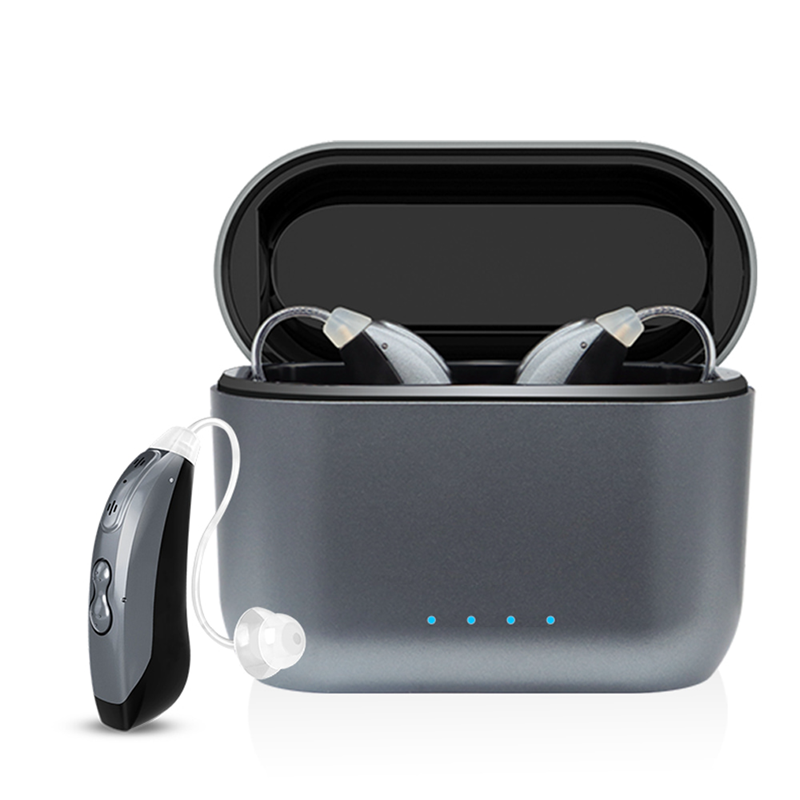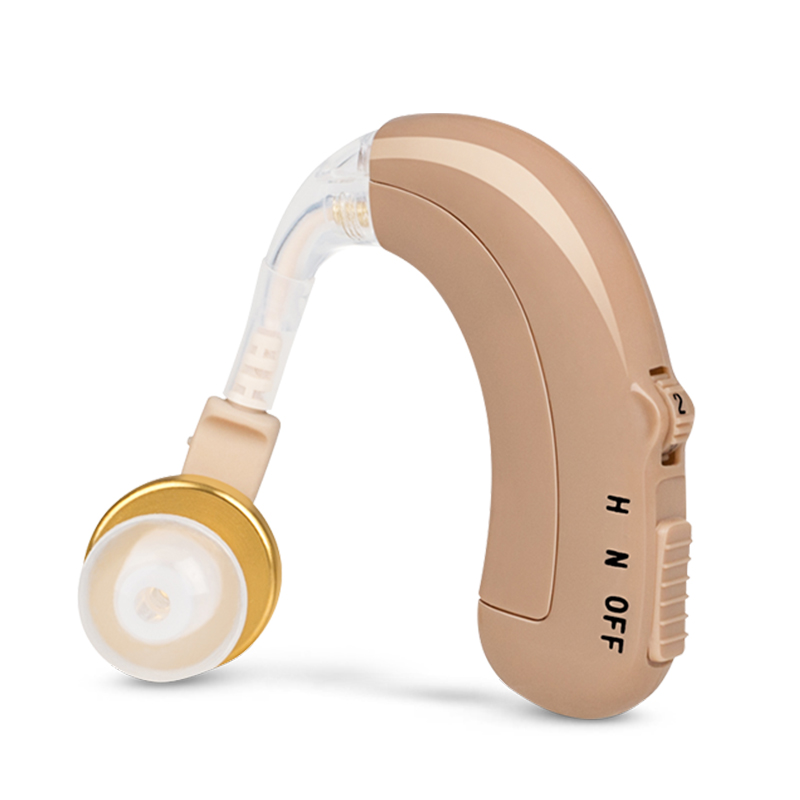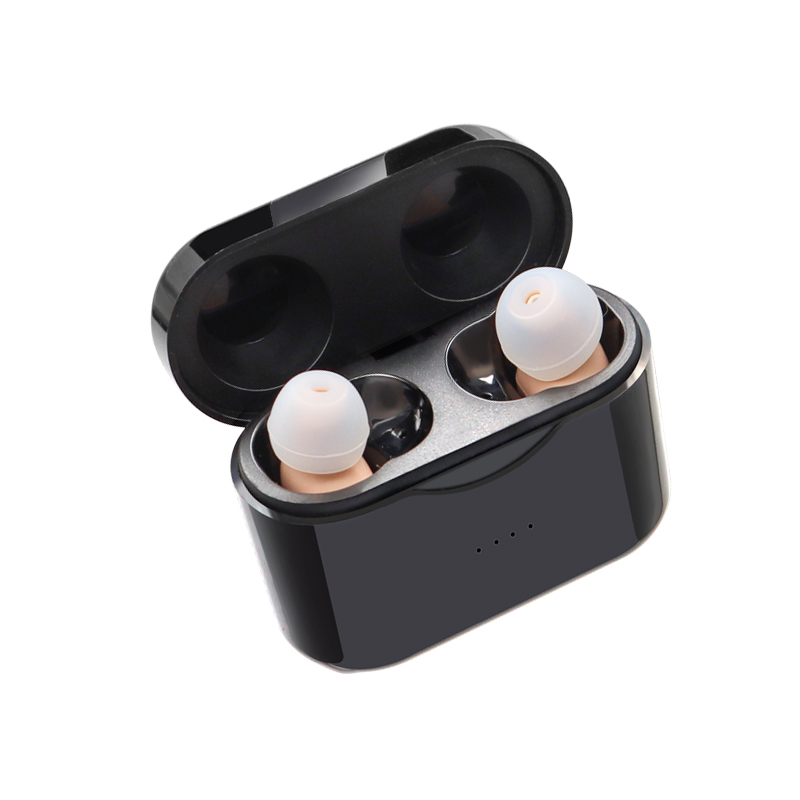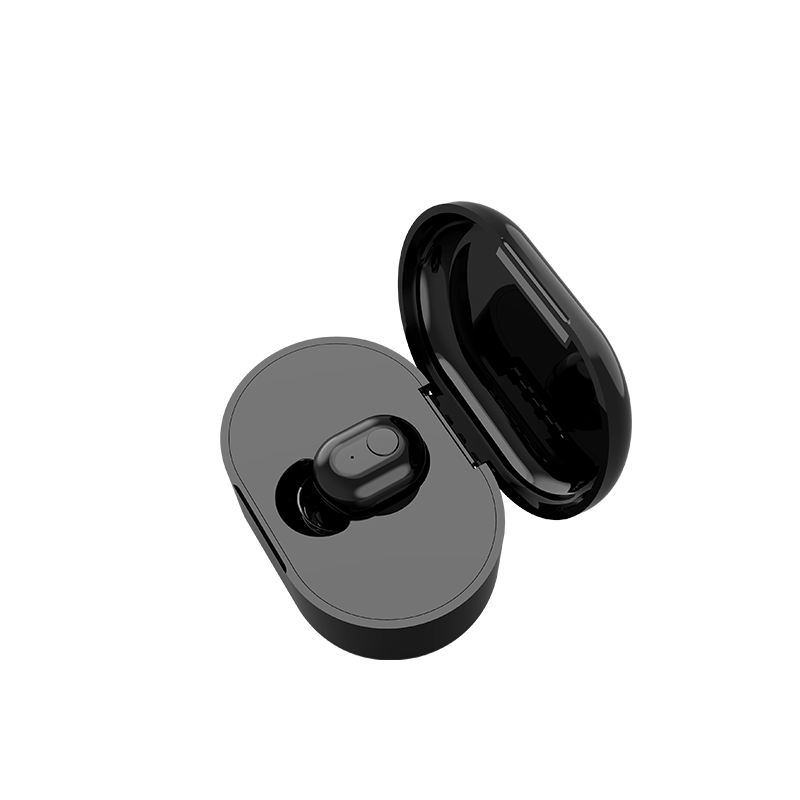Most people with hearing loss have what's known as "binaural" hearing loss, meaning both ears are affected. But some people may lose their hearing in just one ear. This can develop either at birth or later in life.
This is known as unilateral hearing loss or single-sided deafness, depending on the severity of the hearing loss. It's generally referred to as "single-sided deafness" (SSD) when the degree of hearing loss is profound or near-profound. More on degrees of hearing loss.
The hearing loss can occur gradually or suddenly. When it happens suddenly, it requires prompt treatment and should be considered a medical emergency. This is known as sudden sensorieneural hearing loss (see below).

How hearing loss in one ear affects hearing
We were designed to have two ears for a reason—the brain uses both ears to pinpoint the location of a sound, and to improve hearing quality and range.
Losing hearing in one ear presents unique challenges. Depending on the severity of your hearing loss:
- You can't always pinpoint where a sound is coming from: Your brain knows where a sound is coming from by which ear receives the sound first, known as sound localization or directional hearing. When a person can only hear well from one ear, he or she may have difficulty figuring out where the sound originated.
- You may struggle to hear in noisy environments: Your brain is in charge of selective listening, meaning, filtering out noises that aren't useful. This is tougher to do without the aid of a second ear. In a noisy environment, a person with SSD can struggle to focus on a single person’s voice.
- You may have a harder time telling how loud a sound is: The brain “hears” a sound more loudly when it’s perceived through both ears than if the same sound at the same decibel were only perceived through one ear. This is because the brain receives signals from the nerves located in both ears and uses this information to process sounds.
- You may struggle to multi-task: Because of all of the above, single-sided deafness increases cognitive load on the brain, leading to listening fatigue. The more noise there is, the longer it takes your brain to focus on the tasks at hand. If you're also trying to listen to someone speak, you may miss a significant amount of what is being said.
The 'head shadow' effect of single-sided deafness
If you have single-sided deafness, you will likely experience something known as the "head shadow" effect. Due to the way sound waves travel, high-frequency sounds don't "bend" around to the side of the functional ear, meaning a person never hears them.
"The head essentially acts as a shield, blocking sounds from the poorer hearing ear from reaching the better hearing ear," explained Cleveland Clinic audiologist Sarah Sydlowski.
The end result is that speech can sound muffled, because a person can't hear high-frequency sounds like "s" or "f."
Causes of hearing loss in one ear
There are a number of potential causes of hearing loss in just one ear, including but not limited to:
- Meniere’s disease
- acoustic neuroma
- viral or bacterial infections
- physical damage to the ear and head trauma
- circulatory system disorders
- genetic or inherited disorders
Sometimes a cause can't be identified, or is due to a combination of factors.
Sudden hearing loss in one ear
Hearing loss in one ear can develop quickly—you should always act fast if you or a loved one experiences sudden hearing loss of any severity. As it develops, you may also notice you have "double hearing," known as diplacusis.
You should always seek medical care ASAP if you experience sudden hearing loss.
The quicker you seek treatment, the better your chances are for a full recovery. When hearing can't be fixed with medical treatment, single-sided deafness is often the result, which happens about 15% of the time.
Treatment options for single-sided deafness
For people with mild to moderate hearing loss, a hearing aid may be all that's needed to amplify the sounds you're not hearing.
Severe to profound single-sided deafness is often permanent, but sometimes treatable with devices worn on your functioning ear. Your audiologist will perform a hearing test, and ask you questions to try and identify the cause of your hearing loss. From there, he or she might recommend a CROS, BiCROS, or bone-anchored hearing system:
Contralateral routing of sound (CROS) system
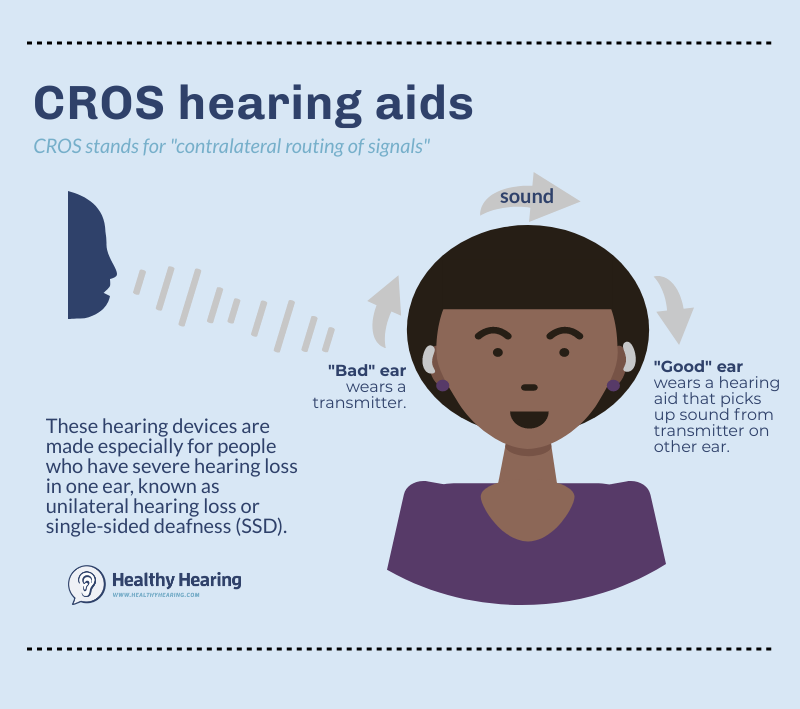
A CROS hearing aid system is designed for people with near-total hearing loss in one ear, but normal hearing in the other. A CROS detects the sounds occurring on the deaf ear, and routes them to the good ear. This requires wearing a device on each ear: On the non-functional ear, the person wears a transmitter device, and in the functional ear, the person wears a receiver that processes the sound and delivers it via a microphone. This sound is not amplified beyond normal because the person has relatively normal hearing.
BiCROS hearing aids work the same way, except they're designed for people whose functional ear has moderate-to-severe hearing loss. This means the functional ear not only receives sound from the transmitter on the other ear, it is also receives amplified sound via a typical hearing aid. Several different manufacturers make CROS and BiCROS hearing aids.
More: What are CROS and BiCROS hearing aids?
It's important for patients to realize these devices re-route sound, but do not "restore" hearing to the deaf ear, according to Erika Woodson, MD, Medical Director of Cleveland Clinic’s Hearing Implant Program, in an online discussion with patients about the devices. "You will not hear in stereo. The benefits of these hearing strategies are to improve awareness of sound from 360 degrees, but you will not be able to localize sound."
Bone-anchored hearing systems

bone-anchored hearing aid.
Image courtesy Oticon Medical
Some people do not find CROS hearing aids helpful. An alternative is a bone-anchored hearing system, which requires surgical implantation. These devices, also known as bone-anchored auditory implants, send sound vibration directly to the inner ear through the skull bone, a process known as bone conduction. This can be helpful because middle ear and ear canal problems might prevent sound waves and signals from reaching the inner ear. In those cases, standard hearing aids are ineffective. Here's how to know if a bone-anchored hearing system will help your single-sided deafness.
Cochlear implants work by directly stimulating the auditory nerve. They are not normally used for single-sided deafness, though the FDA in July 2019 did approve a cochlear implant device from Med-El specifically for single-sided deafness.
For more information
If you are interested in hearing solutions for single-sided deafness, visit a local ear, nose and throat physician. Oticon Medical, which makes the Ponto 4 bone-anchored hearing system, also has a searchable directory of providers.
The above is the interpretation of Single-Sided Deafness: A Guide to Unilateral Hearing Loss provided by Chinese hearing aid supplier Shenrui Medical. Link https://www.srmcm.com/Blog/Single-Sided_Deafness_A_Guide_to_Unilateral_Hearing_Loss.html of this article is welcome to share and forward. For more hearing aid related information, please visit Blog or take a look at our Hearing aids products


